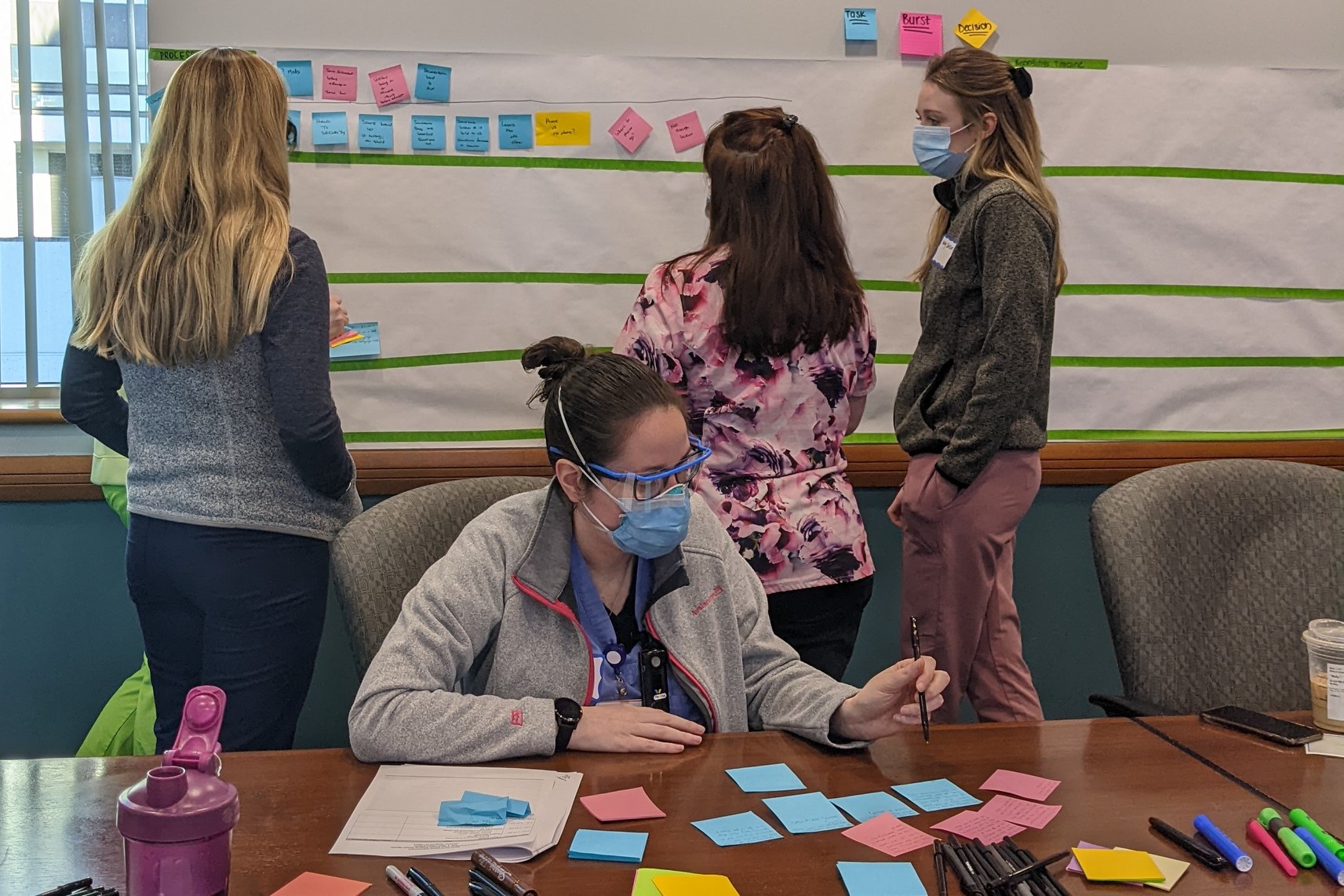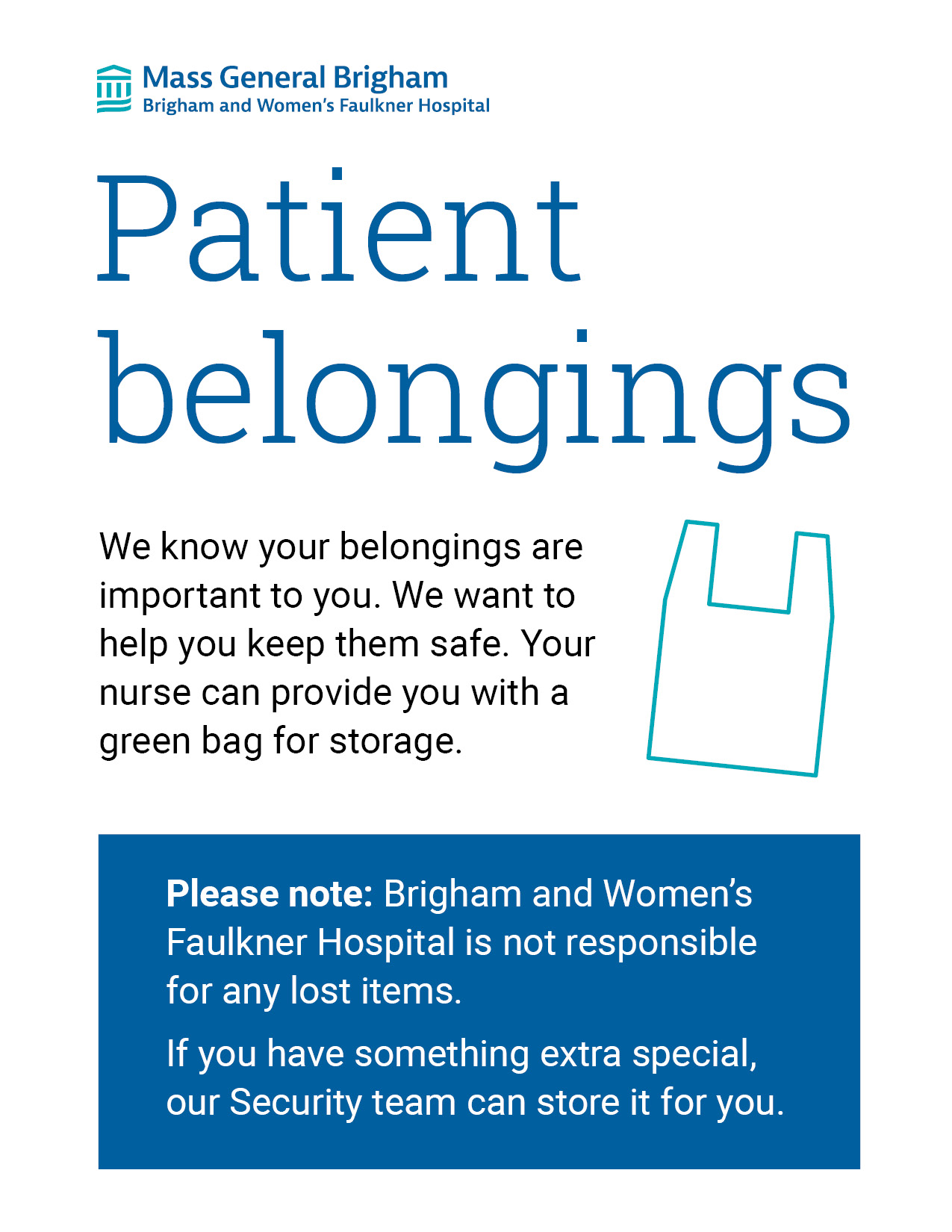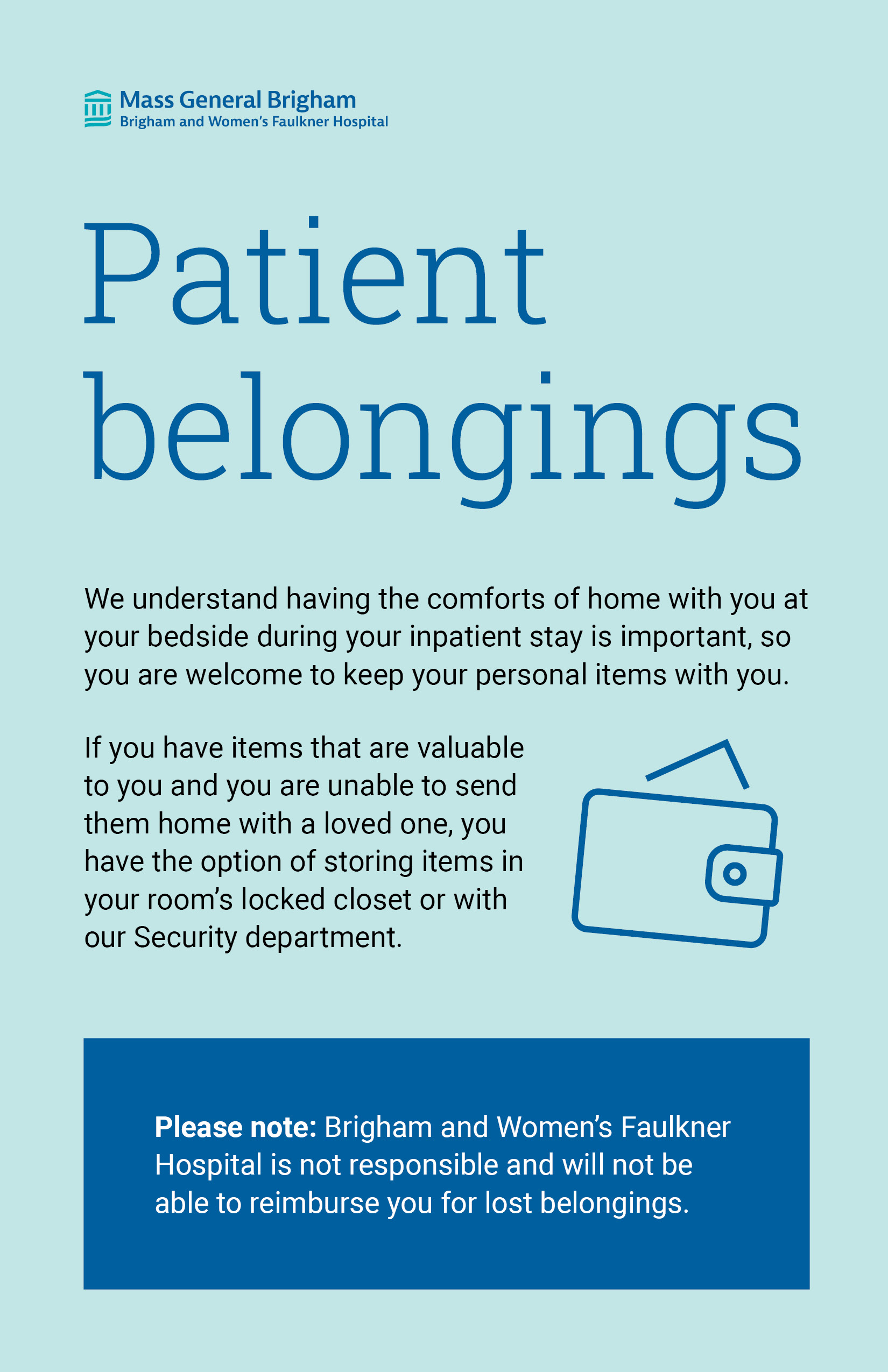
The team meets to brainstorm solutions to improve our patients’ experience
Whether it’s your cell phone, wallet, wedding ring or hearing aid, many of us count among our most important possessions those which we carry with us everywhere we go. But what about when you go to the hospital? Patients who know they will be admitted to the hospital, for instance for surgery, can plan ahead and leave at least some valuables at home. But for patients who come to the hospital via the Emergency Department or are admitted as an inpatient to the hospital unexpectedly, there is rarely the opportunity to plan for the safe keeping of valuables.
What if one of those valuables goes missing?
It’s a question Brigham and Women’s Faulkner Hospital’s Patient Experience Department has been wrestling with for some time, and, with the help of the Performance Improvement team, one they hope to improve going forward.
“We get calls from patients who report personal items missing far too frequently. In some cases, the patient had their item in their possession and it went missing. In other cases, the patient’s items were given to hospital staff for safe keeping—usually for safety reasons—and the items were not returned upon discharge,” explains Nichole Aguiar, LCSW, CPXP, Director of Patient Experience. “Not only is it upsetting to the patient, but it’s costly for the hospital in terms of the time spent looking for misplaced or lost items as well as the amount we spend reimbursing patients when we can’t locate their missing items.”
“It’s near impossible to track down lost items,” says Robert Hain, Lead Investigator and Manager of Training and Compliance. “There are so many different avenues belongings can take when they are not properly documented.”
To ease the burden all around, the Performance Improvement team recently brought together members of the Patient Experience Department with key stakeholders from the Emergency Department, the inpatient units and Security to brainstorm new ways to ensure patient belongings are kept safe during a hospital stay.
“It was like peeling an onion,” says Robin Powell, MSN, RN, CEN, Nurse Director for the ED, of the initially deep dive the team made into the problem. “We had multiple layers of things that were not working particularly well, including out of date policies and procedures. We also found lots of tools in Epic (our electronic medical record system) that could potentially help us better track patient belongings.”
After their initial fact-finding work was complete, the team was left with one question: “Where does the responsibility for patient belongings lay?”
According to Terrance Lassiter, Senior Director of Public Safety and Support Services, responsibility lies both with the patient and with hospital staff. “We can ask patients to leave things like wedding rings and passports at home, but in the event that we are entrusted with personal belonging—for example a hearing aid or mobility device—then we have to take responsibility for keeping track of that item and making sure it’s returned to the patient at the proper time.”
So, the group set about designing a protocol for both the ED and the inpatient units that would better guide staff through the process of logging patient belongings in the medical record. In addition, signage was developed for the two areas to inform patients about their options for safe-guarding valuables and their responsibility for their items should they choose to keep them in their possession.
“Our practice has always been to log patient belongings upon admission and encourage patients to send valuable items like wallets, jewelry and cash home with their family members,” says Suzelle Saint-Eloi, MS, RN, 6 North Nurse Director, whose unit was chosen to pilot this work for the inpatient units. “We now instruct patients to keep items of value that they wish to keep with them in the locked wardrobes that are provided for them in their inpatient room. But, because there is an override code for the wardrobes, we encourage patients to send items of high value to Security for safe keeping.”
The process is similar in the ED where patients can store personal items in a hospital-issued green bag that they keep with them or send items to Security for safe keeping. When a patient is ready to go home, the electronic medical record reminds staff that the patient has items stored with Security and provides a tag number to retrieve the item.
“In our department, we stress the importance of the partnership between patients and our staff to ensure each patient has a good experience within our hospital,” says Aguiar. “As much as it’s our staff’s duty to help patients keep track of their items and offer options for secure storage, it is also the patient’s obligation to take responsibility for their own things. My best advice is for patients to send their most valuable possessions home with a family member.”
Has your department identified a process or workflow that could benefit from the performance improvement process? To learn more about performance improvement and the services available here at BWFH, visit BWFHconnect.
Published 7/13/22

New signage for the Emergency Department

New signage for inpatient units
Looking for more news from BWFH? Go to News to find articles about health, updates to our programs and services and stories about staff and patients.
Go to News